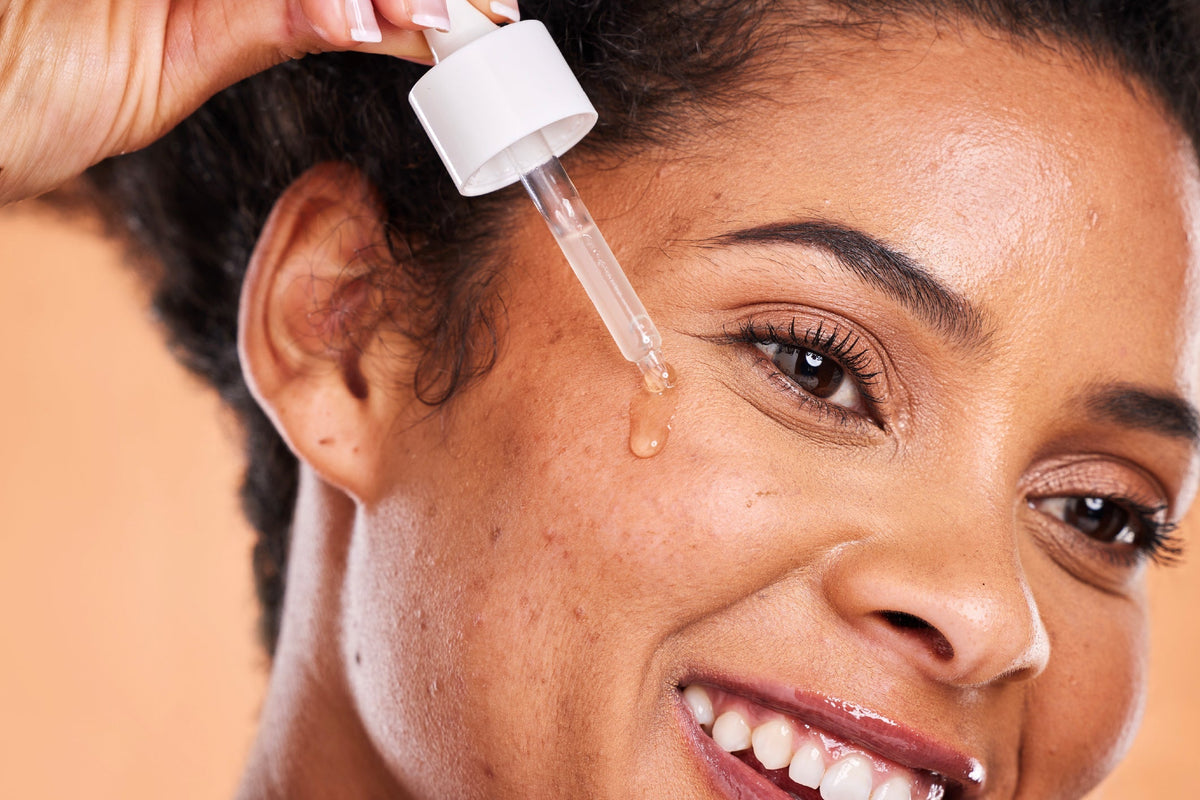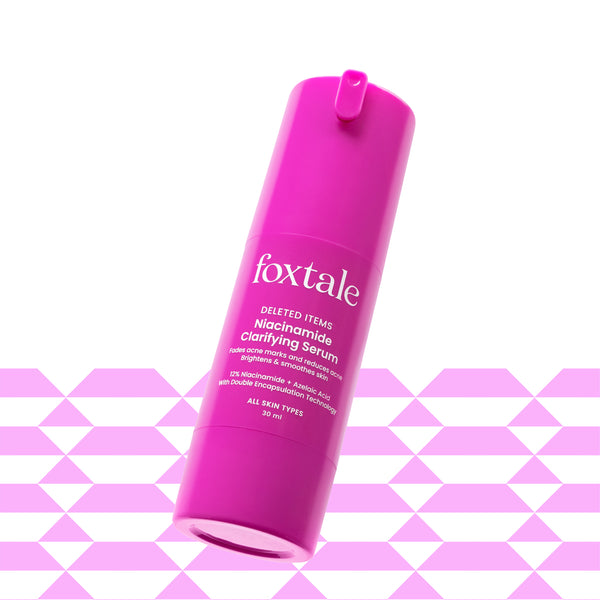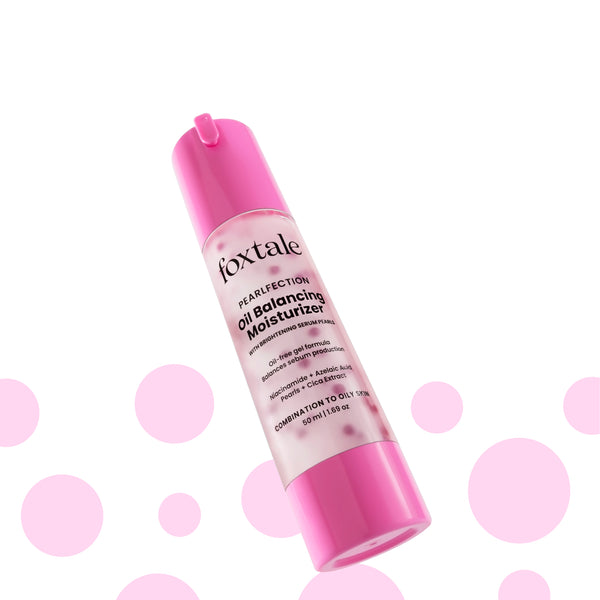
Azelaic Acid is the unsung hero of skincare that quietly delivers. So, if your skin’s constantly breaking out or you’re tired of looking shiny by noon, this could be the one ingredient that changes everything.
Let’s break down what makes Azelaic Acid different, how to use it without irritating your skin, and why it works when other treatments don’t.
What Exactly Is Azelaic Acid?
Azelaic acid is a lab-created version of a compound naturally found in grains like barley and rye. But in skincare, it’s much more than that. When used topically—usually at 10% to 20%—it can calm irritation, fight acne-causing bacteria, and help fade dark spots without the sting or side effects.
It’s especially useful if your skin is on the sensitive side or tends to react badly to other active ingredients. Contrary to harsher acids, , Azelaic Acid works gradually—and more gently—across different layers of the skin.
Here's what it helps with:
1. Cuts down acne bacteria
2. Soothes swelling and redness
3. Keeps pores from clogging
4. Helps reduce oil without drying you out
5. Fades dark marks over time
Instead of a “quick fix,” think of it as a steady solution that quietly makes your skin better with consistent use.
How It Helps With Oil Control
Oily skin brings forth many other problems, including recurring acne. You see, too much sebum clogs your pores, traps bacteria, and causes breakouts that just keep coming back.
Azelaic acid targets the issue at its root. It regulates the process that leads to clogged pores—called follicular keratinization—so oil doesn’t get stuck and cause flare-ups. Unlike harsh acne treatments that dry out your skin and then kick off a rebound oil cycle, Azelaic Acid helps your skin balance itself over time.
That also means less surface shine, fewer midday grease emergencies, and a face that stays clearer without feeling stripped. For the best results, pair it with a lightweight, oil-free moisturizer—something that hydrates without adding to the problem.
Why It Works So Well on Acne
Azelaic acid isn’t a one-note treatment—it tackles acne in several ways at once:
1. Targets bacteria: It lowers levels of the specific bacteria that contribute to breakouts.
2. Calms inflammation: It helps reduce swelling and discomfort, especially in cystic or hormonal acne.
3. Unclogs pores: It exfoliates lightly to prevent the buildup that leads to blackheads and whiteheads.
It’s also one of the few actives ingredients that treats both inflamed breakouts (like pimples and cysts) and non-inflamed ones (like little bumps or clogged pores), without disrupting your skin barrier or leaving it flaking.
It Also Helps With Pigmentation and Texture
Beyond breakouts, Azelaic Acid is a solid option for dealing with leftover marks and uneven skin tone. That’s because it blocks the enzyme your skin uses to create melanin, helping to fade dark spots from acne or sun exposure.
It's frequently recommended for people dealing with melasma or post-inflammatory hyperpigmentation—and unlike stronger lightening agents, it doesn’t make your skin more sensitive or reactive.
You might also notice your skin feels smoother. It has a mild exfoliating effect that improves texture without peeling or flaking. If you add a Niacinamide Serum into the mix, you’ll likely see an even bigger difference in tone and clarity.
How to Use Azelaic Acid in Your Routine
You’ll find it in creams, serums, and gels—usually around 10% in over-the-counter versions, or 15% to 20% if prescribed. It works well in both morning and evening routines, but you’ll want to start slow.
Try this basic routine:
1. Cleanse: Use a gentle cleanser—nothing too foamy or drying.
2. Apply Azelaic Acid: Smooth on a small amount, focusing on problem areas.
3. Moisturize: Follow with a light moisturizer for oily skin to help seal in hydration.
4. Sunscreen (morning only): Even though azelaic acid isn’t overly photosensitizing, SPF is non-negotiable.
Start once a day, preferably at night. If your skin handles it well after a week or two, you can use it twice a day. You can also alternate it with other ingredients, like Vitamin C in the morning or an exfoliant a few nights a week.
Tips for Avoiding Irritation
Most people tolerate Azelaic Acid well, but a few might feel a bit of tingling, dryness, or redness at first.
To minimize irritation:
1. Always patch test before full use
2. Don’t layer it directly over strong acids or Retinol
3. Use a barrier-supporting moisturizer
4. If it’s too much, cut back to every other day until your skin adjusts
Give your skin a few weeks to adapt. Once it does, Azelaic Acid tends to be one of the most reliable, low-maintenance ingredients out there.
How Long Until You See Results?
First 1–2 Weeks:
You might notice less redness and swelling. Small breakouts may shrink faster and feel less painful.
By Week 4–6:
Breakouts should become less frequent, and your skin may start looking more even. Oil levels often begin to settle down too.
By Week 8–12:
This is when you’ll likely see a major difference—fewer flare-ups, faded dark spots, and an overall smoother, calmer complexion.
Azelaic acid doesn’t work overnight, but its strength lies in long-term consistency. If you stick with it, the results tend to last.
The Bottom Line
Azelaic acid is a steady solution for acne-prone or oily skin. It won’t dry you out, it won’t cause major flare-ups, and it doesn’t rely on aggressive exfoliation to work. Instead, it supports your skin’s natural balance while gradually clearing breakouts and evening out tone.
Build a simple routine around it: a gentle cleanser, a calming moisturizer, SPF, and—optionally—a serum like Niacinamide. Let your skin breathe and give it time to heal properly.
FAQs
Can I use Azelaic Acid every day?
Yes, most people can. Start with once daily, and if your skin handles it well, you can apply it morning and night.
Is Azelaic Acid better than Glycolic Acid?
They work differently. Glycolic exfoliates more on the surface; Azelaic works deeper and is gentler overall. If your skin’s sensitive or acne-prone, Azelaic Acid is usually a safer pick.
Can I combine Azelaic Acid with Vitamin C?
Yes, but it’s best to separate them at first—Vitamin C in the morning, Azelaic Acid at night. If your skin handles both, you can layer them: Vitamin C first, then Azelaic Acid. Just be sure to patch test beforehand.
Shop The Story
8+ hours of oil control + pearlescent glow
See reviews





